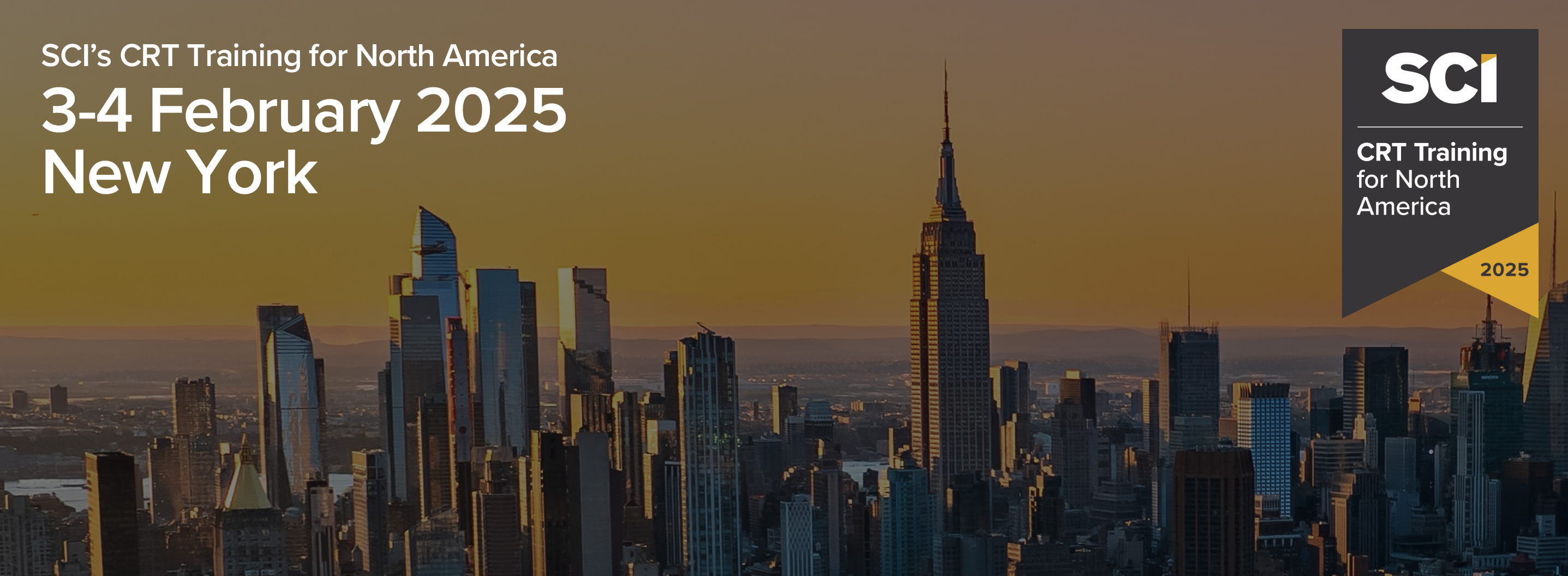3-4 February, 2025 – SCI’s CRT Training for North America
We are excited to announce the first-ever New York edition of SCI’s CRT Training for New Market Entrants, taking place on February 3rd and 4th, 2025. Following several successful editions in London, we are bringing this highly regarded training to the U.S. market. The agenda has been carefully updated to align with the latest developments in Capital Relief Trades (CRT), empowering you with the skills and insights needed to thrive in this evolving sector.
The U.S. market for CRTs, or Risk Sharing, continues to grow, with both Wall Street and regional banks playing a significant role in the SRT (Significant Risk Transfer) market. Yet, executing a successful SRT deal involves overcoming numerous challenges, such as securing buy-in from stakeholders, navigating complex regulations, and partnering with the right investors.
Our course is designed to give you the knowledge to navigate these complexities confidently. Led by experienced CRT market practitioners, this hands-on training will provide you with the practical insights needed to strengthen your expertise and elevate your performance, whether you’re at a Wall Street institution or a regional bank.
To cap it off, right after the training, you’ll have the opportunity to attend SCI’s 9th Annual Risk Transfer & Synthetics Seminar, also taking place in New York. This premier event will allow you to network with leading industry professionals and apply your newfound knowledge in real-world discussions.
Agenda
-
Day 1 – 3rd February
-
12:00 - 01:00Registration & lunch
-
New issuers, especially smaller banks, typically face two sets of challenges when exploring whether to execute a capital relief trade. The first challenge is achieving senior management buy-in regarding the benefits of synthetic securitisations and marshalling the necessary resources to support such an issuance. The second challenge is providing sufficient visibility on a portfolio for an investor to re-underwrite it, including preparing a substantial amount of historic default and loss data. This module outlines all of the factors a prospective CRT issuer will need to consider when putting together a feasibility study and business case proposal for their board.
-
02:30 - 04:00Balance Sheet Optimisation
The Basel 3 Endgame reforms are set to fundamentally reshape the banking landscape. Arguably the most significant impact on capital requirements will arise from the implementation of the output floor, which could radically change the way banks manage capital, including by managing it at an overall portfolio level. This module highlights the operational and cultural changes being driven by Basel 3.1, in terms of the processes for calculating capital requirements and how capital is perceived and understood within a business.
-
04:00 - 04:15Break
-
04:15 - 05:45Structuring
Capital relief trades are structured in several formats, employing different structural features to achieve a variety of outcomes. This session will introduce the CRT structures most commonly used by practitioners and discuss how structuring choices drive risks for originators and investors in each case. We will then explore certain core transaction features, including replenishment, amortisation profiles and termination events.
-
-
-
Day 2 – 4th February
-
08:00 - 08:30Breakfast
-
09:00 - 10:30Regulations as They Apply to Structuring
The Federal Reserve’s guidance regarding Regulation Q in September 2023 provided clarity in connection with direct CLN issuances, but it also placed a limit of the lower of 100% of capital and US$20bn on the principal amount of assets with respect to which a banking organisation may transfer risk via direct CLNs. Indirect CLN structures that do not consolidate to the banks are consequently becoming appealing to banks that need to manage this US$20bn cap. This module will explore a selection of key regulatory requirements as they relate to structuring and documenting a CRT deal, as well as how they impact issuer, investor and regulatory engagement.
-
Failure to pay and bankruptcy are the two standard credit events for CRTs, although restructuring has also appeared to a limited extent following the Covid-19 crisis. This module addresses the scope of credit events definitions and loss settlement mechanisms, including quantifying the availability of protection, the timing of protection payments and verification methods.
-
12:00 - 01:00Lunch
-
01:00 - 02:30Issuer Perspective
This session will explore the issuer considerations and negotiating processes that drive portfolio selection, structuring choices and transaction pricing. We investigate why a bank may decide to execute a syndicated versus bilateral, funded versus unfunded and synthetic versus cash transaction depending on the reference portfolio.
-
Gain insight into approaches to investing in capital relief trades, incorporating due diligence, structuring, pricing and monitoring methods. This session will also highlight considerations in relation to transaction terms, focusing on relevant risk and return drivers and how they can be assessed.
-
04:00 - 04:15Break
-
This module explores the role that (re)insurers play in the CRT market, including their participation in the GSE programmes and mortgage guarantee space. It also examines the current state of play in the US unfunded market and which solutions are being deployed to unlock capital across the sector.
-











